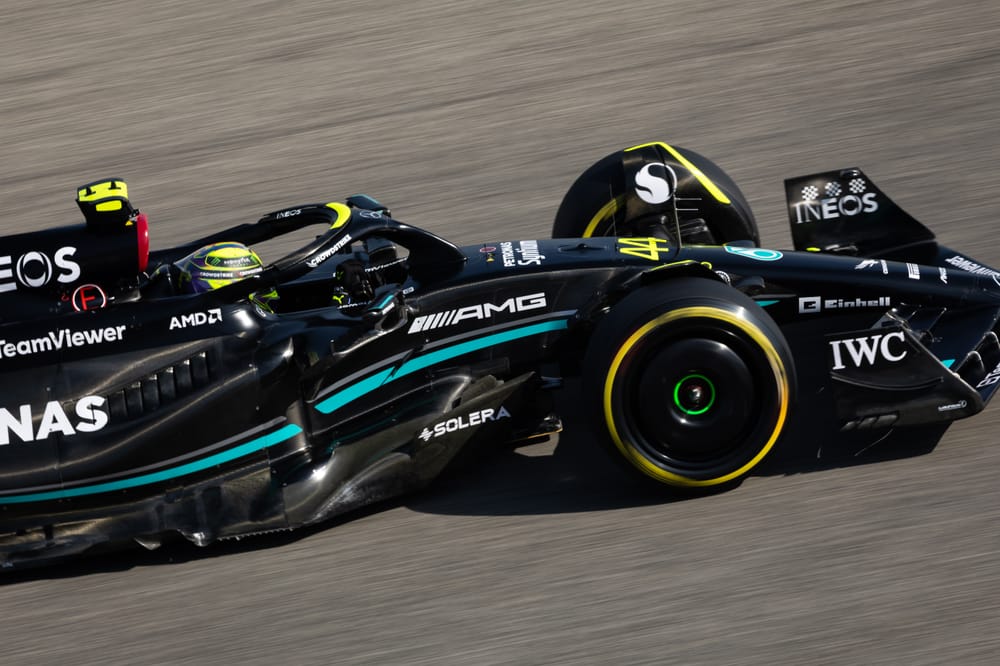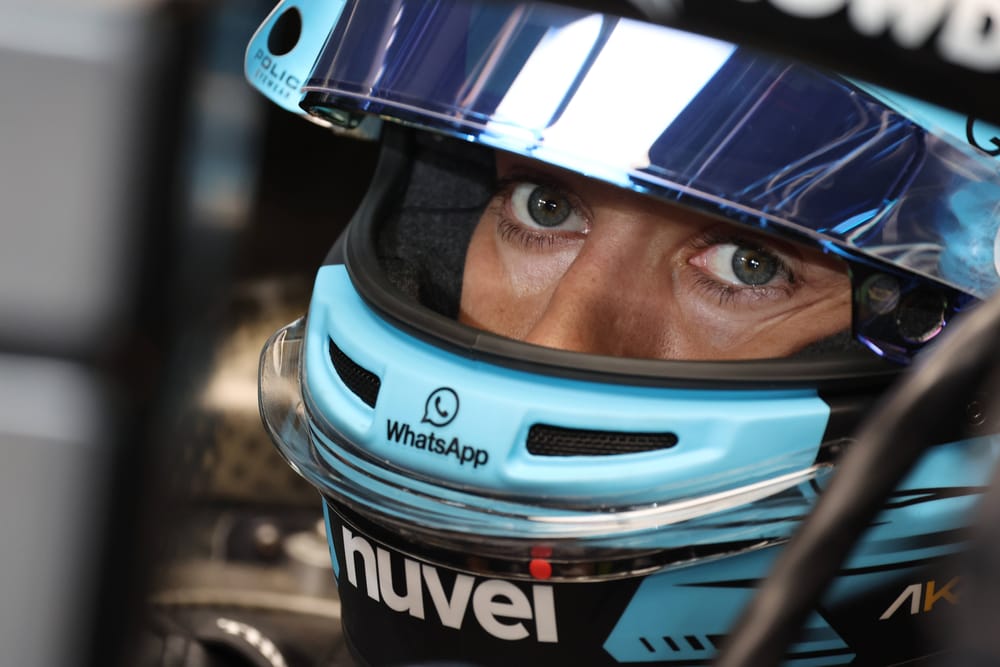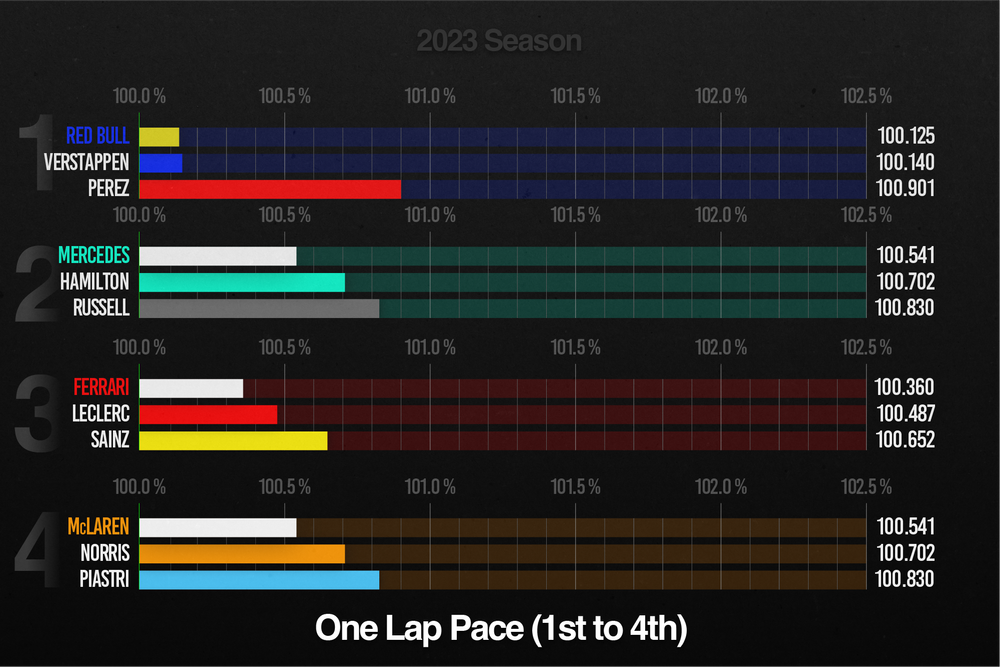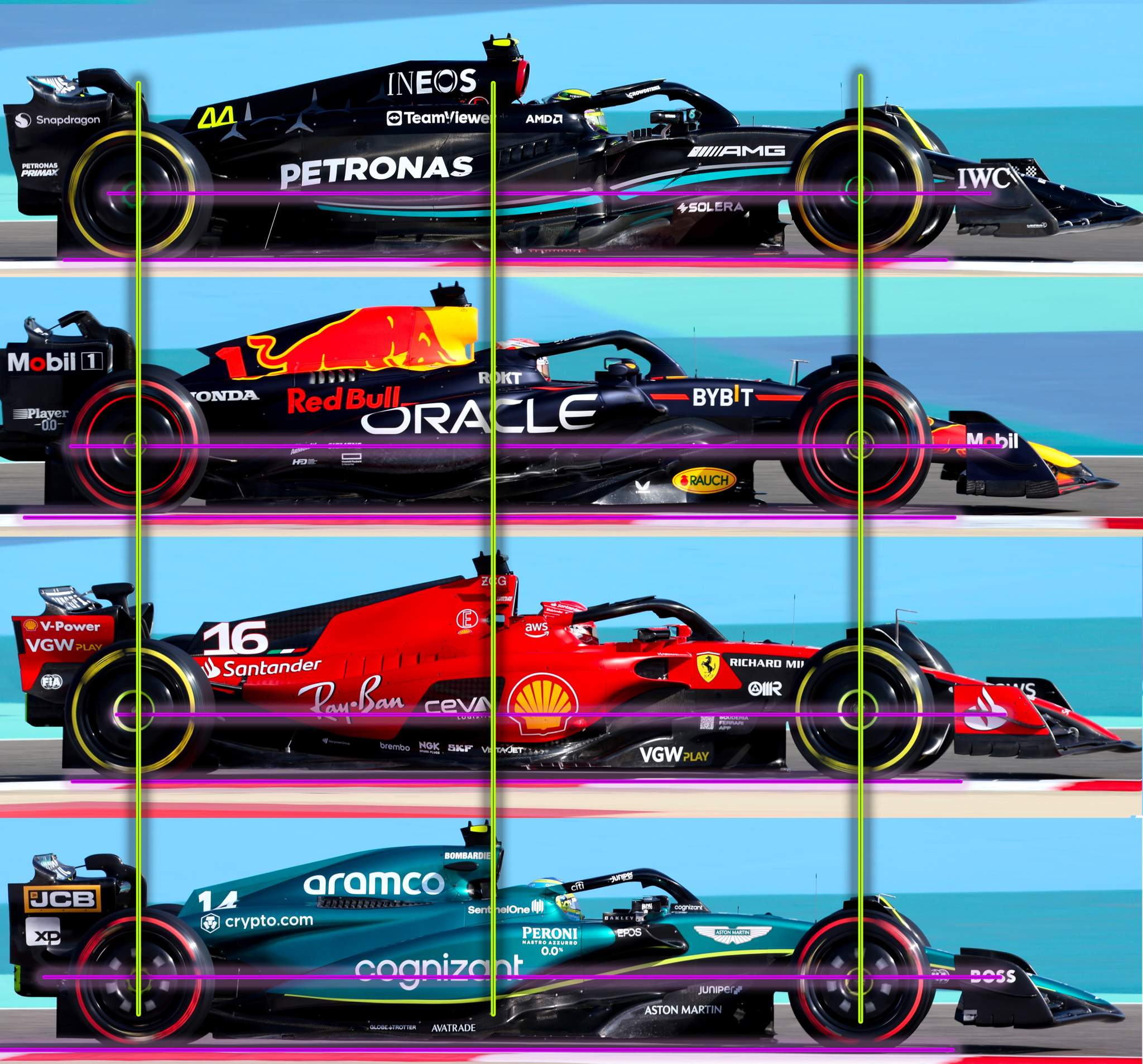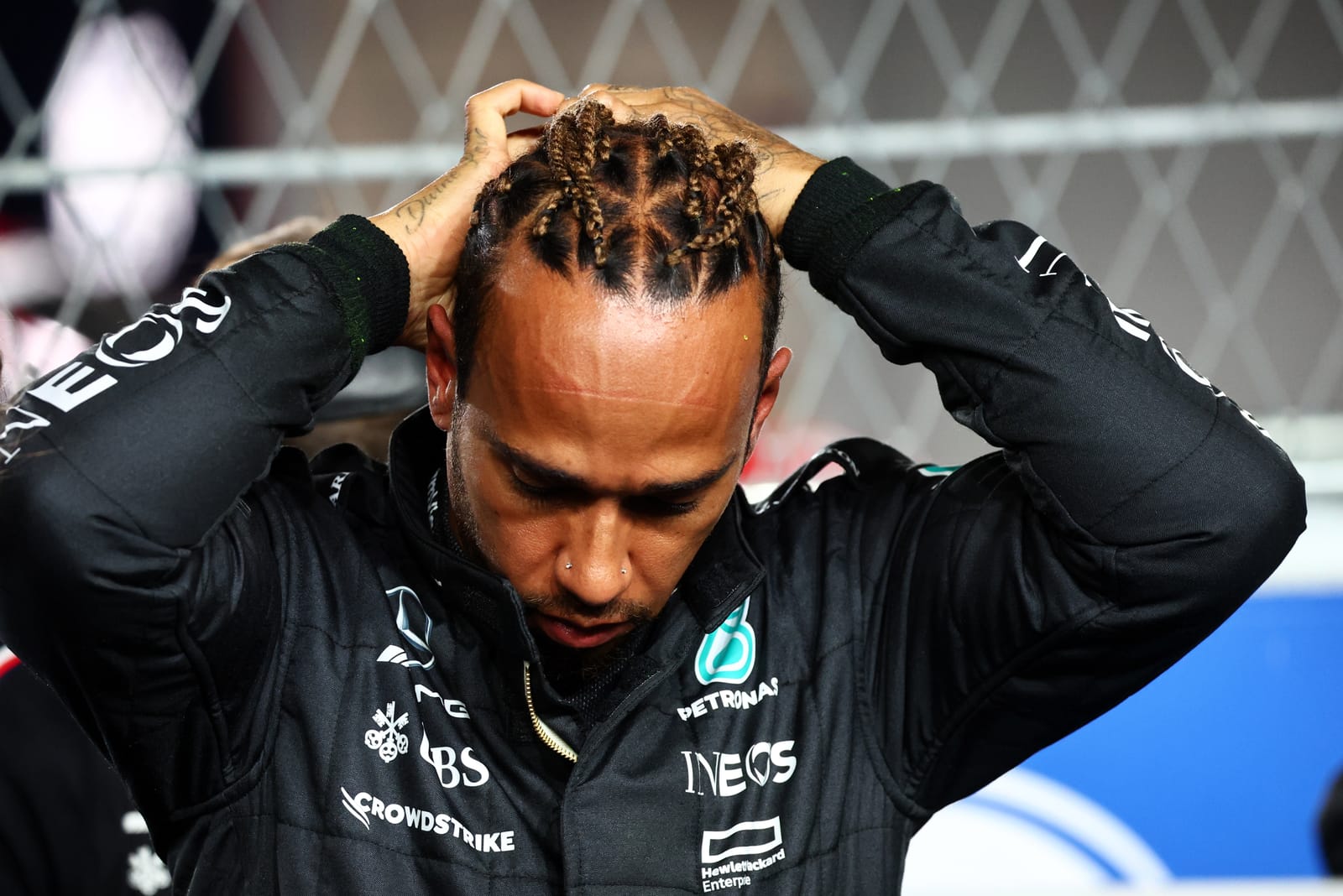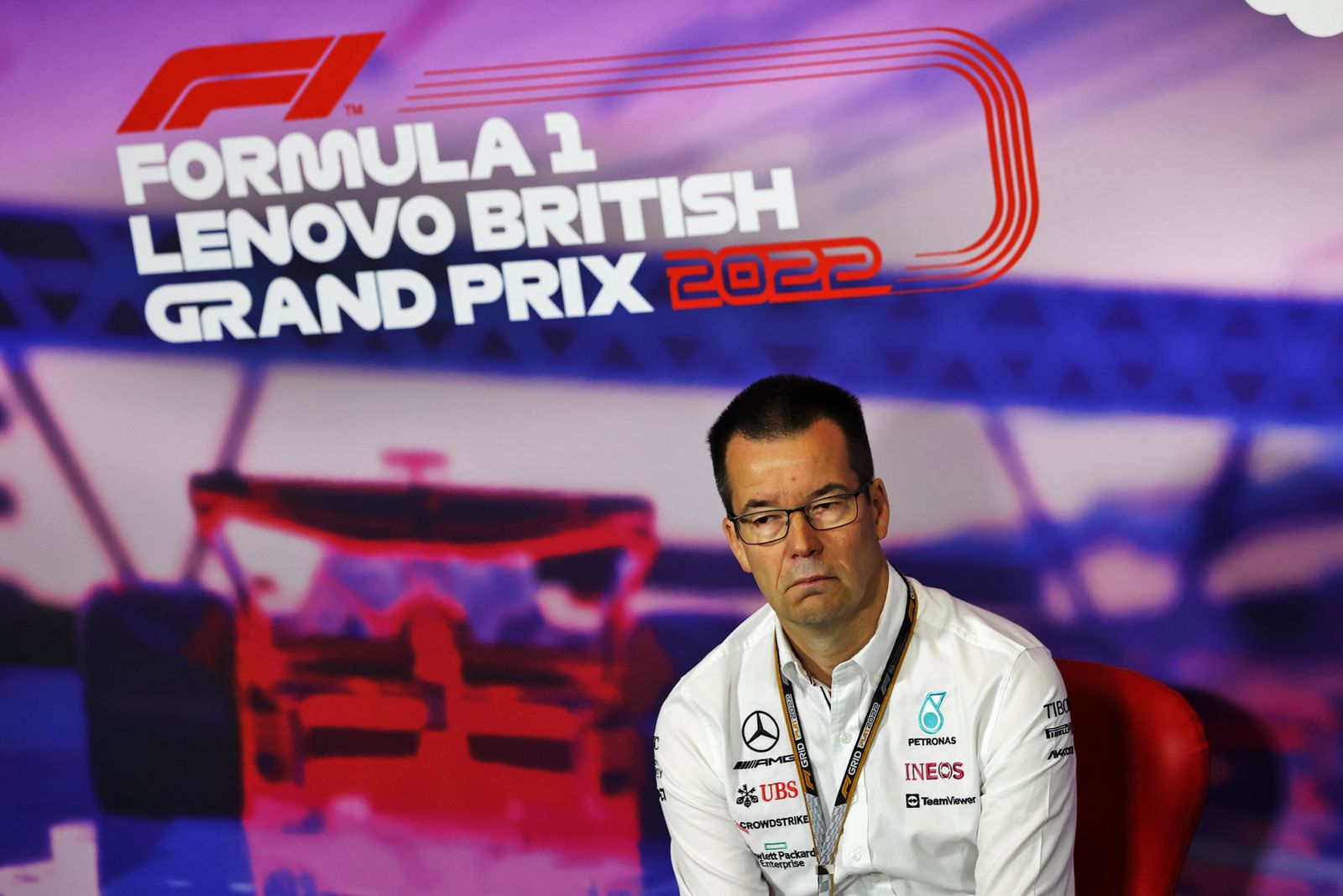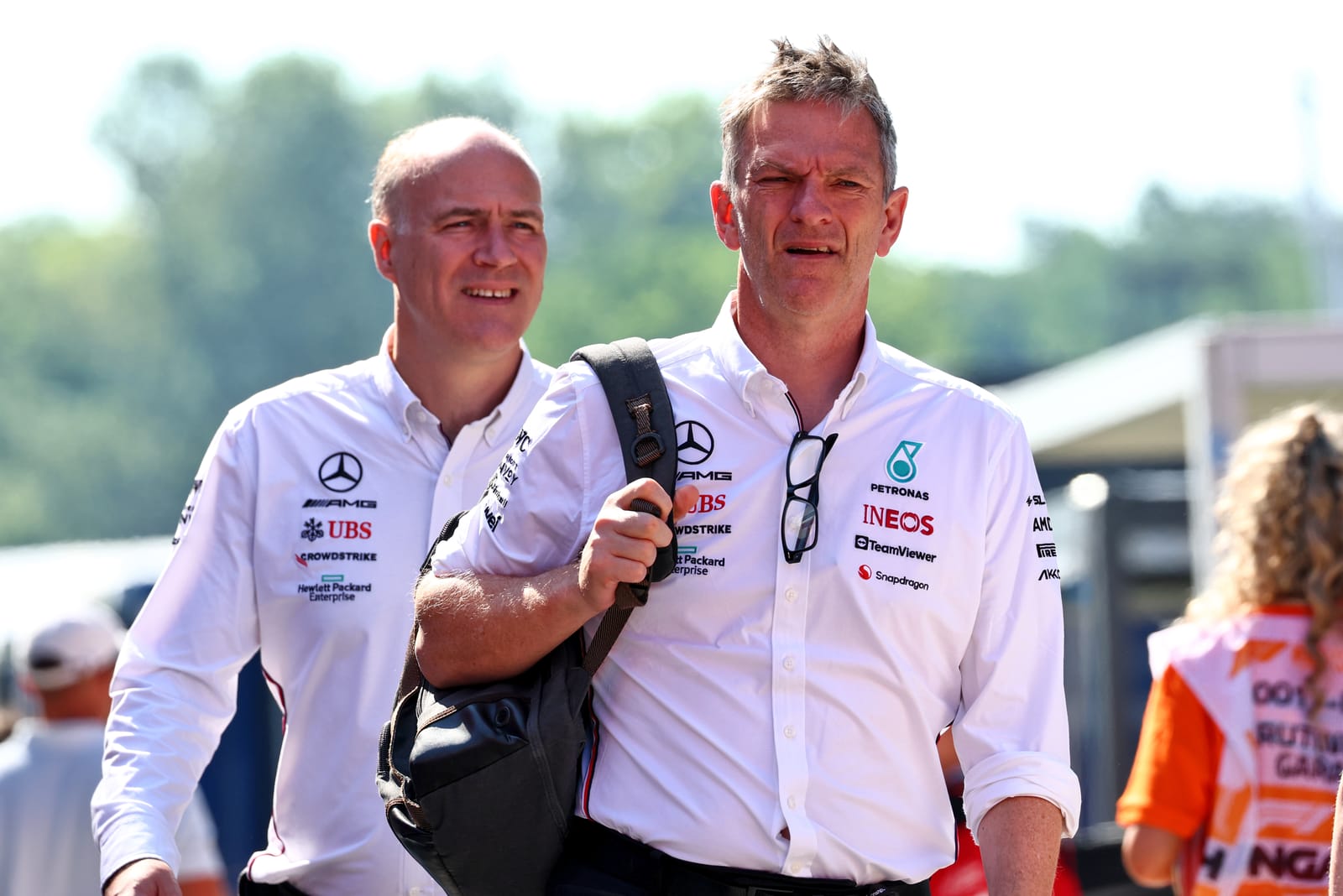Up Next

“Are we world champions?” asks Mercedes technical director James Allison, with a smile, in response to a question about whether the wrong decisions were made when it came to designing the “truculent” W14.
It’s a rhetorical reply, not from someone who finds the plight of his team amusing but from a hugely competitive character who subscribes to the idea that second place is just the first loser. Mercedes wasn’t victorious and axiomatically that means at least some of the choices underpinning the car were incorrect.
Mercedes didn’t win a race in 2023, let alone the world championship. Therefore, by definition something has gone wrong. And Allison, who returned to the technical frontline mid-season, is unafraid to confront those fundamental mistakes. To understand the full context of why Mercedes got it wrong, he looks back to the troubled 2022 car.
“If you take last year’s car, we were very hampered at the beginning by horrible porpoising,” says Allison. “We hadn’t imagined that would be a problem and it was caused by having too much downforce too near the ground in a way that produced an aerodynamic instability that was very difficult to understand and took us a while to get rid of it.
“Over the course of that first year, we developed a car that had plenty of downforce near the ground that we turned out not be able to use because of the porpoising we didn’t see coming, but the downforce would drop away quite quickly when you raised the car.
"Later in the year, we fixed the porpoising with some changes to the floor geometry, but were left with a car which didn’t have as much downforce near the ground as it used to have. And still the downforce dropped away quite steeply when you went higher."
"Although that was OK at tracks like Barcelona, it was utterly hopeless at other places where you needed to have the rear ride height higher. So you could be OK at Barcelona and then lousy at Monaco the next week.
"The rest of that season was [about] expanding the range of downforce, finding more downforce at higher rear ride heights.”
FAILING TO EXPLOIT 2023 RULE CHANGES
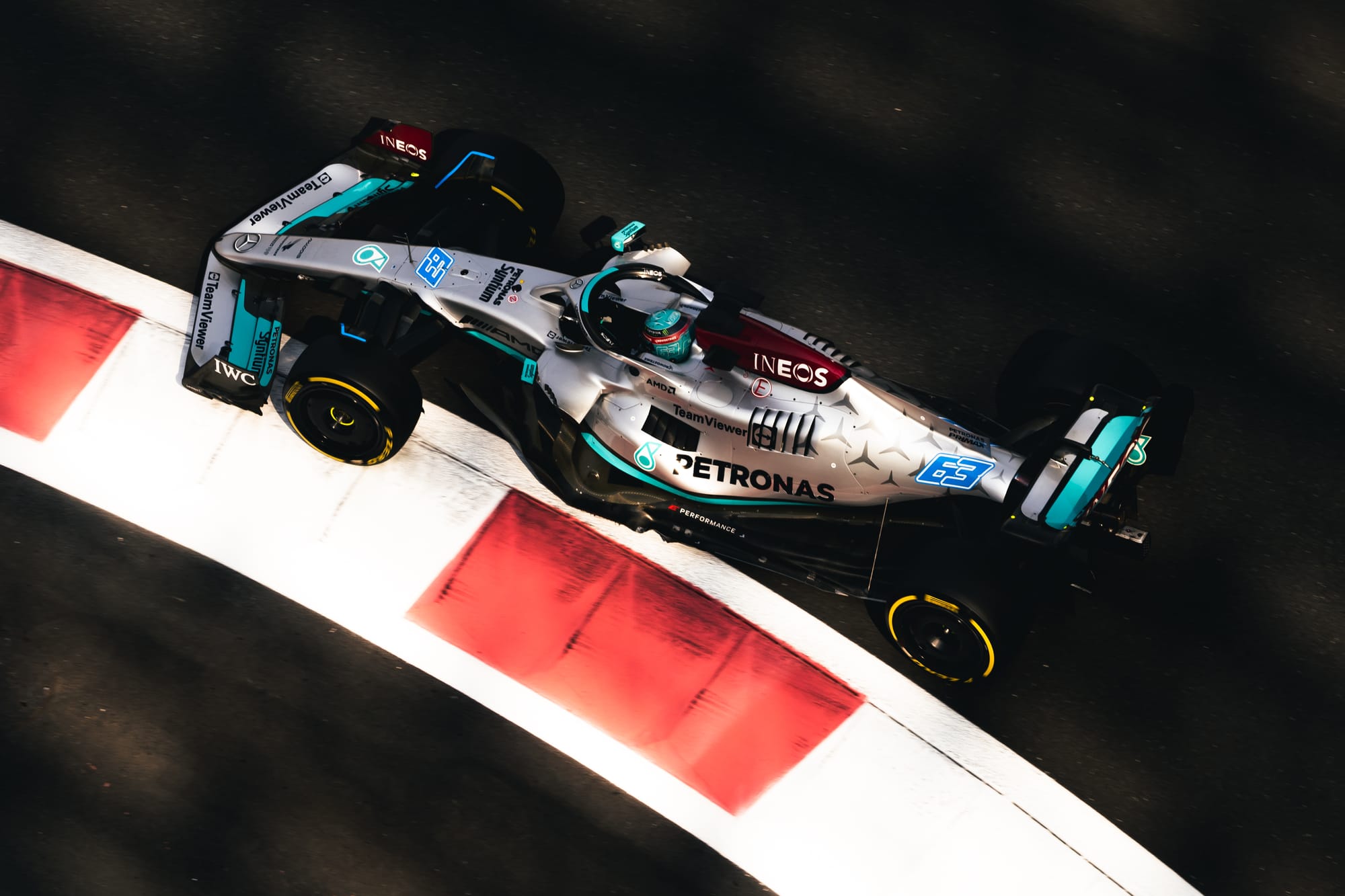
Given Mercedes made a respectable recovery in 2022, it continued in a similar direction with the W14 rather than transforming the concept. But there was a curveball in the form of the rule changes introduced to tackle concerns about the physical toll porpoising took on drivers.
A curveball, it should be noted, Mercedes was a instrumental in creating the conditions for by lobbying hard for action to tackle porpoising.
Allison characterises the increase in the floor-edge height by 15mm as coming “quite late in the day”, but acknowledges it meant the cars would bounce less. The question was, how to respond to that?
“There was a big debate internally,” says Allison. “Should we cash in that 15mm and drop the car down, operate the car in a window that is 15mm smaller, because the cars will be less bouncy inherently? Or should we do more of what has done us well over the course of the year, which was force ourselves to keep looking for downforce where it’s difficult high up?
“These rules don’t reward you [with downforce] high up, it’s really hard to find, but that brought us some benefits over the course of last year. So the debate raged internally for a while. The logic was it’s very hard to predict because the tools are not especially good for this, anyone’s tools, not just ours. They are not very good for predicting exactly where bouncing is going to be incurred.
“It’s much harder to back yourself out of having driven off the edge of a cliff and finding yourself bouncing than it is to be too high, not bouncing and then lower yourself towards it. So the outcome of our internal debate was let’s err on the cautious side, let’s keep trying to find downforce where it’s hard and if it turns out we’ve been too cautious we will spend the months that follow working quickly to recover that.
“And if we’re lucky and others cash in the 15mm – and without tools that prove to them everything will be fine, I remain of the view it was a gamble - then they’ll all bounce and we'll be the smart ones for having taken the cautious approach. So that was the route.
“Now, as it turns out it was too cautious - it was possible to cash in the 15mm. We would have been better placing our chips on that part of the roulette wheel, then we’d have got much sooner to the performance we’re at now.”
DITCHING 'ZERO-PODS' HURT PACE INITIALLY
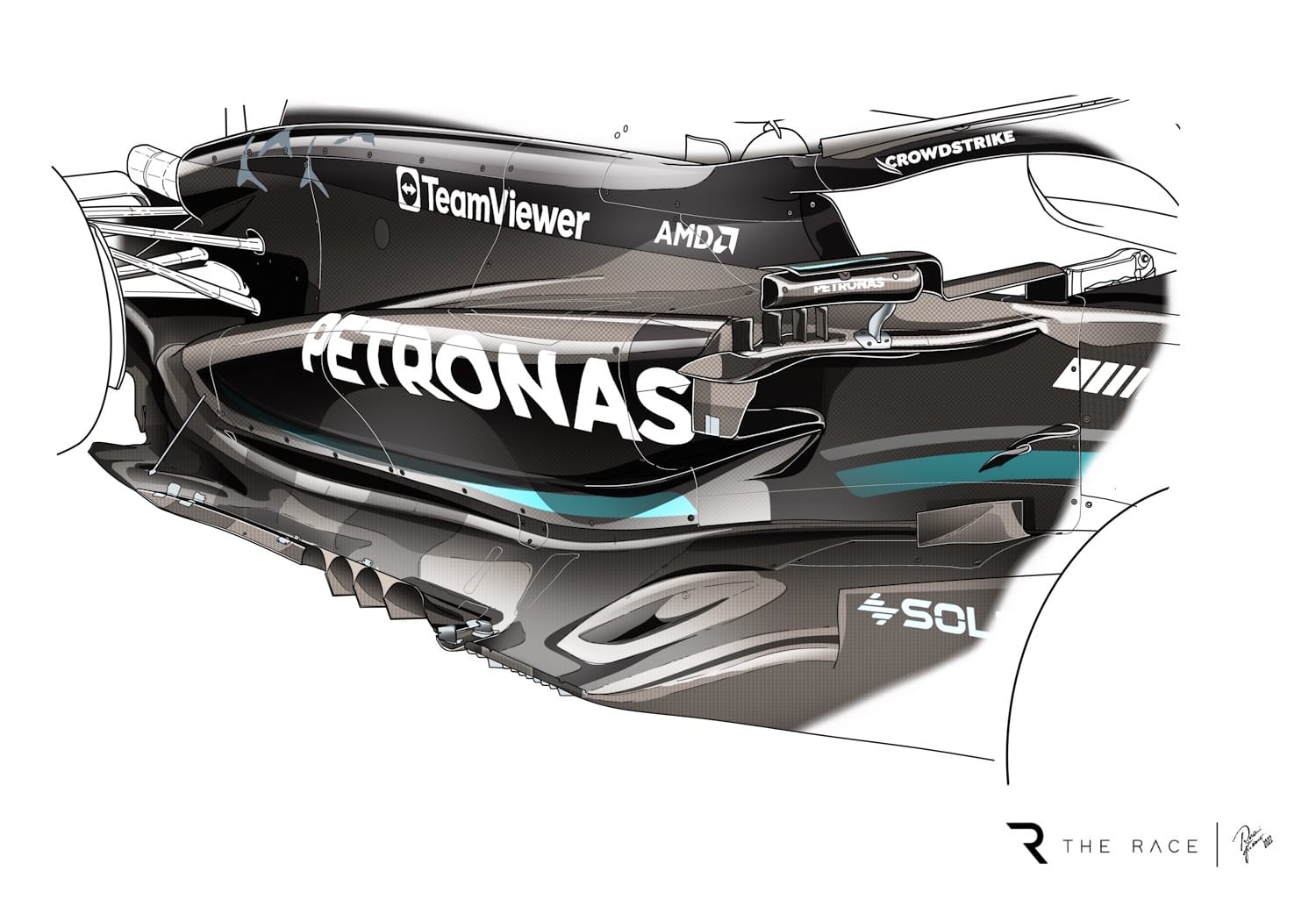
Publicly, the team admitted it was in trouble after qualifying for the Bahrain season-opener. Team principal Toto Wolff said that evening that “we thought we could fix it by sticking to this concept of car and it didn’t work out”.
But that wasn’t the day when Mercedes realised how far off it was. As Allison says, “it was pretty obvious in winter testing”.
Changes were already in the works, but it wasn’t until the sixth race of the season at Monaco in May that Mercedes introduced an upgrade that represented the first step in a new direction. The car was very obviously transformed thanks to the disappearance of the narrow sidepods, but Allison stresses this did not prove the so-called ‘zero pod’ design was a problem.
There was far more to the upgrade than just bodywork changes, with floor modifications and new front suspension with a higher mounting point for the forward leg of the top wishbone to increase the anti-dive angle. There were also tweaks to the tunnel inlet fences, a widening of the bodywork at the top of the 'Coke bottle' section where the bodywork narrows and new winglets in the lower rear corner.
“The laptime that came with the Monaco update was not remotely from the things that were visually different, apart from the wishbones,” says Allison. “The change to the sidepod fronts were [a case of] ‘let’s just not have that as a thing to worry about for the future’.
“Actually, the decision to go to that new sidepod front probably took about two tenths of a second off the update package we put on the car. From a pretty torrid 14 months, we took that off the table as a variable, but actually that particular change on that particular day was slower than what preceded it.
"The things which brought performance were all underneath the car, and rear brake drums and ducts, front wing. Subsequently, you work with what you’ve got then and just iterate from that point. This car long ago left that 0.2s deficit behind it and away we go.
“The conceptual change was all about undoing the conservative decision about ride heights. It’s nevertheless true that along the way, as we sought to find downforce in a different part of the ride height map, you get different geometry under the car as a result.”
The changes that could be made to the Mercedes were always limited by the architecture of the car. The 2024 machine is the chance to correct the limitations of the monocoque design and the rear suspension and gearbox.
What hits the track next February will be the culmination of the understanding Mercedes has built of the design characteristics needed to produce the most competitive car under these regulations and the direction change that started in Monaco.
A BIG SOURCE OF HAMILTON'S FRUSTRATIONS
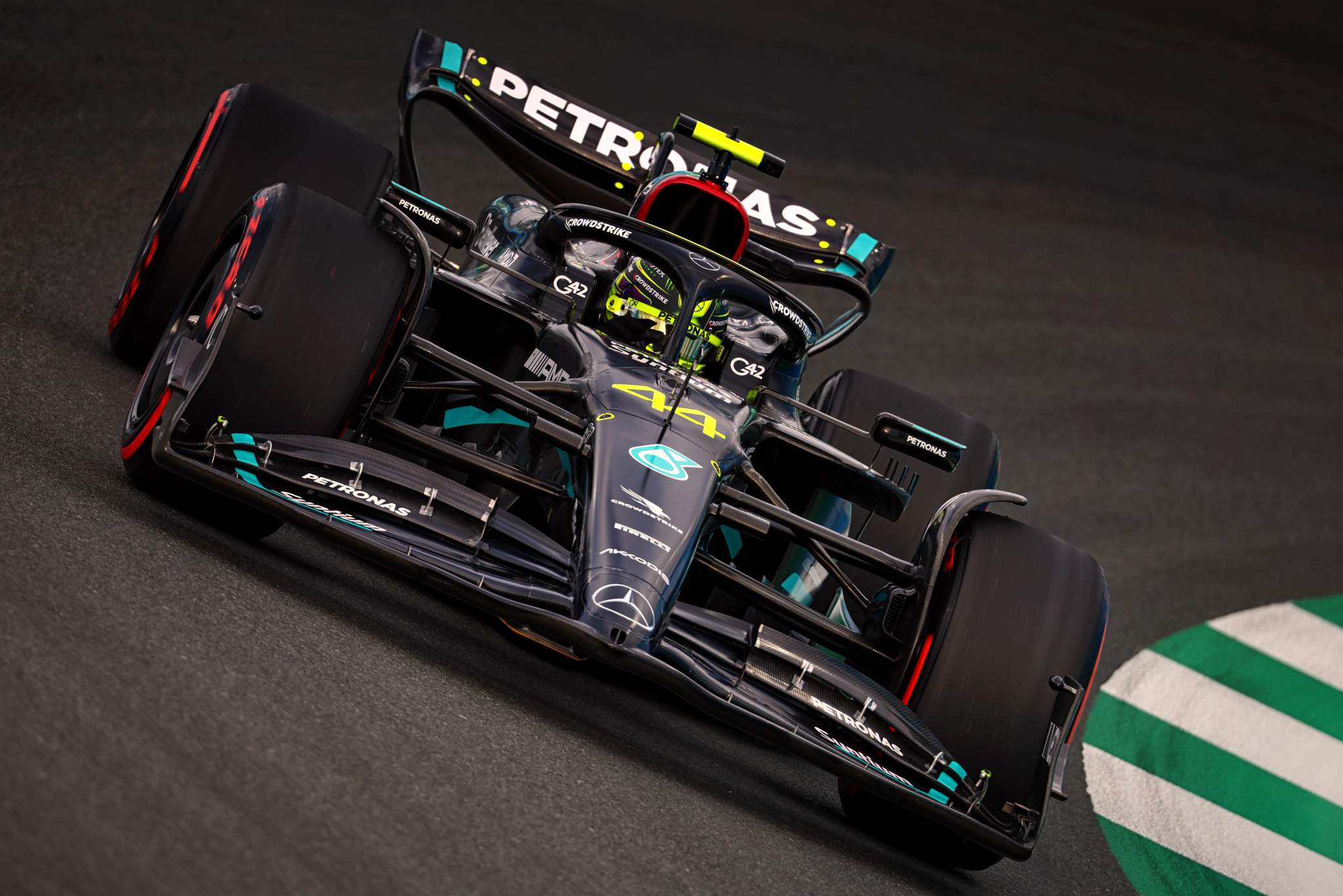
Lewis Hamilton has been vocal in his criticisms of the car and one of the problems he’s highlighted is the seating position, which he felt was too far forward and therefore made it harder to feel the rear end.
Allison interprets this differently, focusing on what the first-order problem rather than what he regards as a symptom of it.
He characterises it as a fundamental lack of rear stability, meaning that the cockpit position would be more trivial were this to be eliminated.
That said, he also believes that Hamilton’s complaints about this last year were not correctly acted on primarily because it was felt the bouncing was causing the instability. And, of course, it wasn’t. Or, at least, not entirely.
“When we were completely and utterly stuck in the bouncing hell, all we could do was fix that because that was the number one, two and three problem,” says Allison.
“We were not good enough at listening to the fact that they [the drivers] were telling us something else in parallel, which is that they didn’t like the turn-in instability of the car.
"And we said ‘well, it’s bouncing, what do you expect?’ But it isn’t that.
"They didn’t like the turn-in instability later when it wasn’t bouncing and they didn’t like the turn-in instability of the car this year whether it was bouncing or not. That has been a common thread with our car throughout.
“Lewis’s way of expressing that is in talking about his seating position. George [Russell] doesn’t ever talk about his seating position, but he describes exactly the same ugliness to the car.
"If we can fix that properly, the only part of Lewis’s seating position that he would still dislike is that he sees a bit less of the corner apex because it’s a bit nearer the tyre than if he’s a bit further back.
“But the actual seating position itself is not giving rise to a perceptual issue that makes it hard for him to detect how to handle the car.
"Possibly, if he were sitting exactly where he wanted he might be able to drive a truculent thing with slightly more precision, but the issue there is get rid of the truculent thing, not optimise the seating position to handle something that isn’t good.
“Our focus has been on making it less horrid and I would say the Austin upgrade was a mild step forward in that regard. With a bit of luck next year’s car will bring a load more.”
IS MERCEDES LOOKING IN THE RIGHT PLACES?
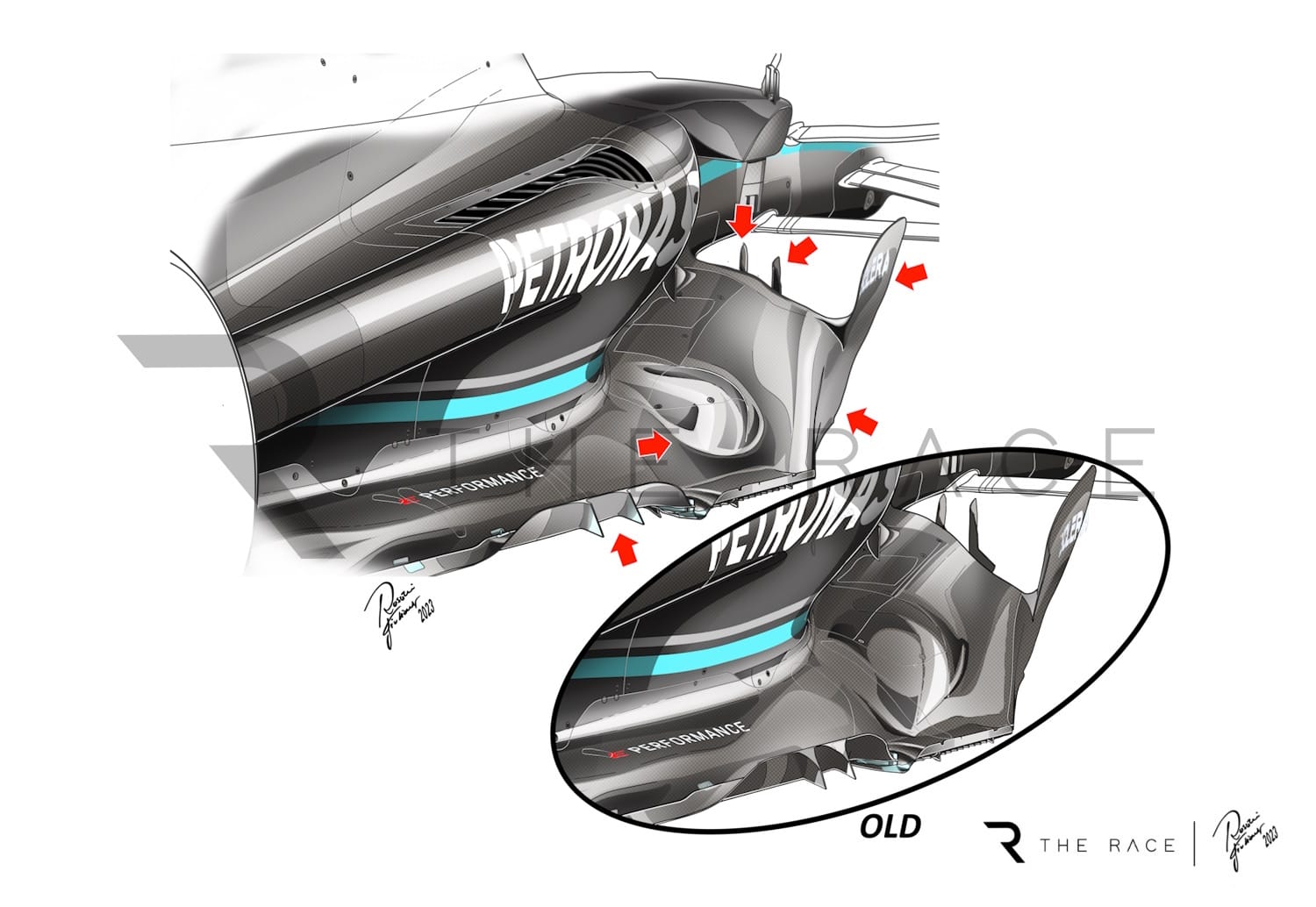
While that Austin upgrade preceded Hamilton’s exclusion from second place for plank wear, he was probably happier with the feel of the car there than on any other weekend.
That reflects the fluctuations of the season, when the Mercedes could swing from relatively benign to being all over the place – and sometimes managed to exhibit such extremes across the two sides of the garage.
After two seasons grappling with its problems, Mercedes' hope is that the all-new 2024 car will banish such capricious characteristics to history. And that’s all about getting the conceptual detail of the car right, which as Allison says is about far more than what shape your sidepods are.
“Whether by good fortune or enormous skill, the cars that are the quick ones are the ones that have conceptual strength,” says Allison. “The execution of that concept will be more or less elegantly done depending on the quality of your drawing office staff. What makes the thing work or not work is what you value, what will bring me laptime.
“Everyone says downforce will bring me laptime? OK, where? Do you want downforce at 80mm or do you want downforce at 30mm off the ground?
"Do you want the car to be good in crosswinds? Well, OK, but is that one-degree crosswind, 15-degree crosswind? How much importance are you going to give to 15 degrees versus five, versus zero?
"These are all conceptual choices. Not 'concept' as in sidepod concept, much deeper conceptual choices about what you choose to place value upon. Once you set out your stall for what you place value on – the 'where is the treasure buried?' analogy – your factory, the efficiency of you factory will dig that out of the ground for you, but only if you are looking in the right places.”
The key question now is whether Mercedes is looking in the right places and fully understands how to achieve the delicate balance between aerodynamic and mechanical characteristics required to make the most of these rules.
Much has been learned from the trials and tribulations of 2022 and ’23 and a well-resourced team full of hugely accomplished people, battle-hardened tools sharpened during this process and headed by a technical director in Allison who is as competitive as they come, has everything it needs to make a big step forward next year.
But similar things were said 12 months ago. As Allison has laid out, there were reasons for the failure to turn things round immediately and weaknesses went undetected because all of the problems were laid at the door of porpoising.
It’s impossible to judge fairly from the outside whether that was an unavoidable mistake or reflected an arrogant myopia when it came it the idea the car was fundamentally sound if the porpoising could be taken out of the equation and the prodigious downforce numbers produced when the car was close to the ground could be fully realised.
The reality will be somewhere in between, and it’s worth noting that Allison has also talked about the team’s “fragmented” reaction to its troubles needing to be pulled together.
Whether there are any false assumptions or hidden problems underpinning the new direction and the choices made will dictate how well the 2024 car works.
That doesn’t mean having to win immediately given there’s a long way to go to catch Red Bull. If Mercedes is on the right track, it’s all going to be about good, old-fashioned development rate relative to Red Bull and the rest. If not, a third year of frustration awaits.
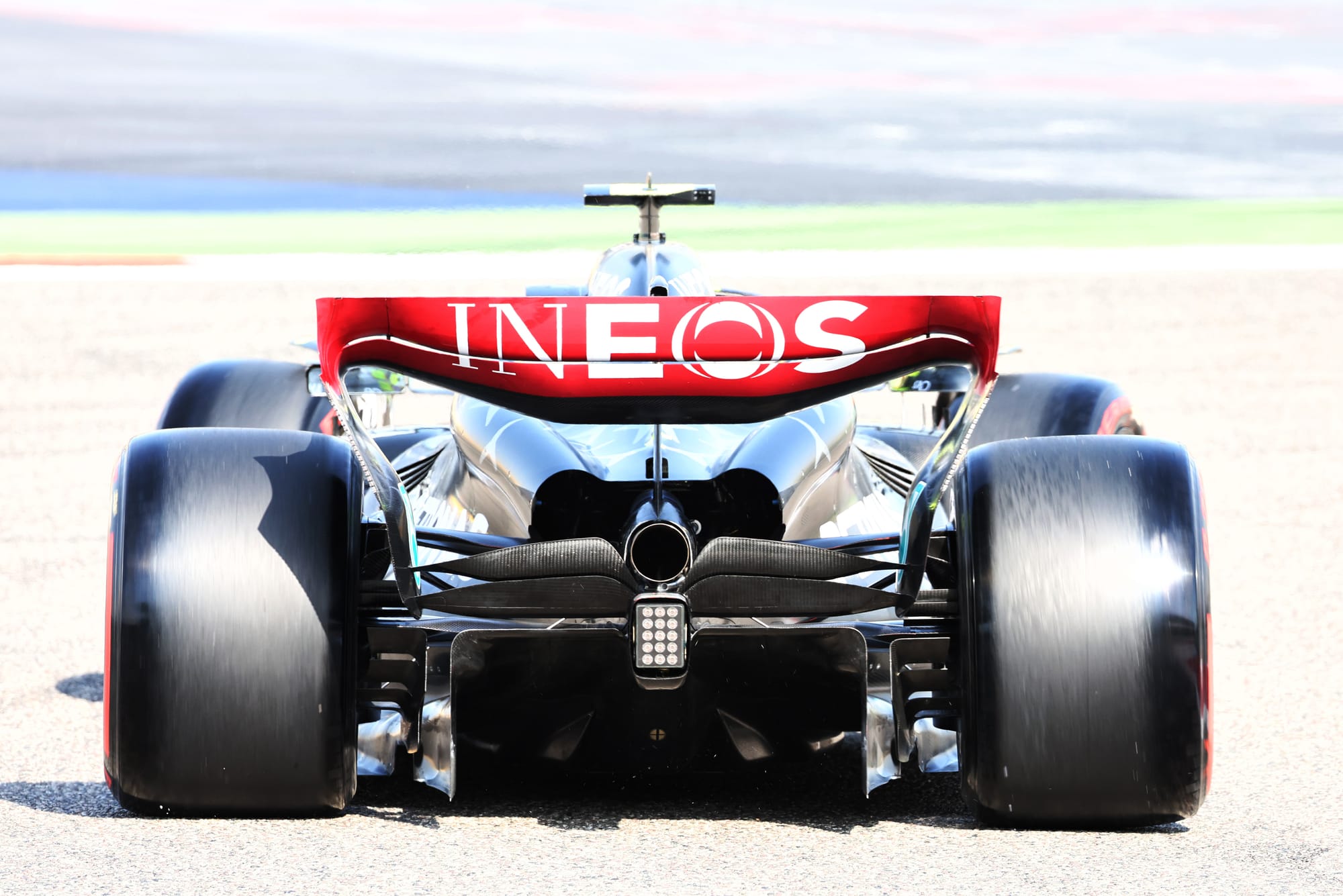
As for the conventional wisdom that things close up in the second season of a regulations shift and the question of why they didn't, at least as far as Red Bull’s advantage was concerned, Allison has a characteristically caustic response when it is mentioned.
“I think you can probably point at the rest of us and say ‘come on, sort yourself out’.
“Maybe it’ll take one year longer than it should have done and you’ll all have something to write about again…”

